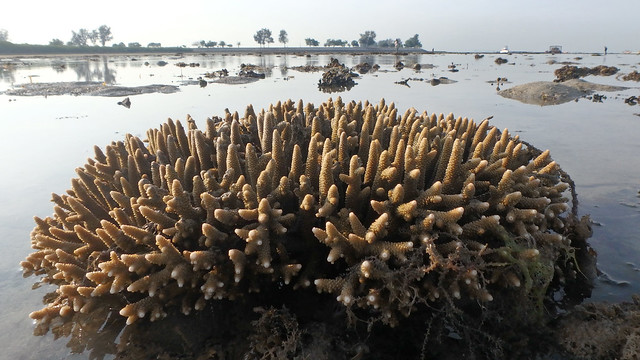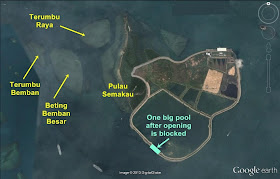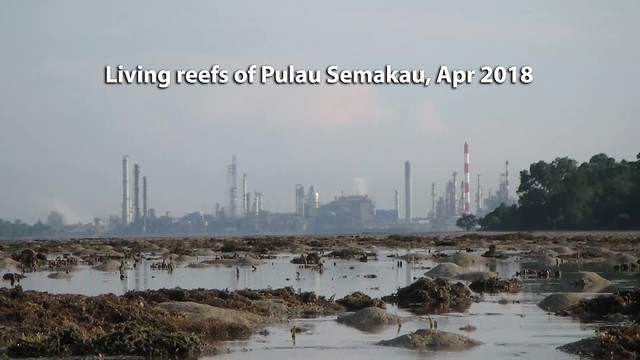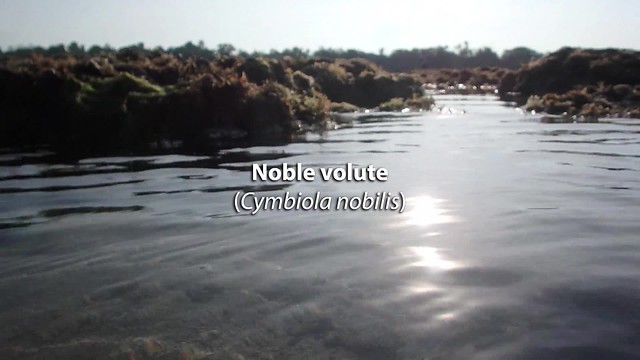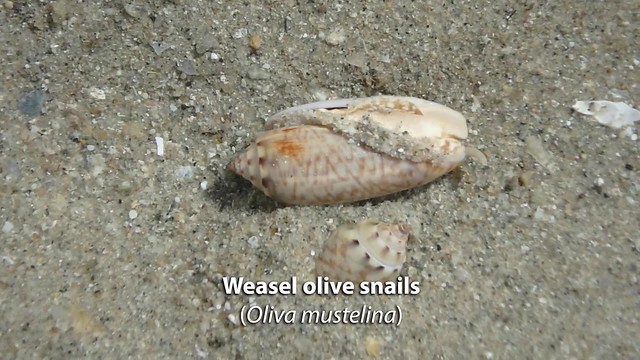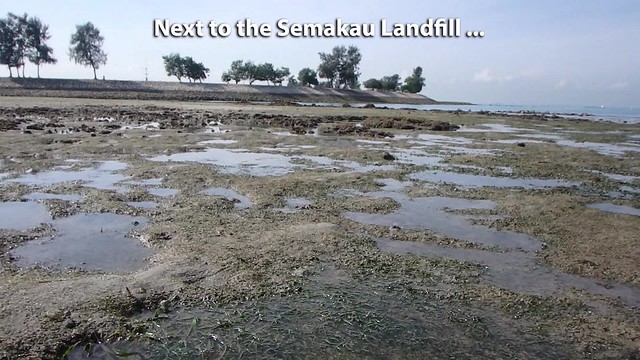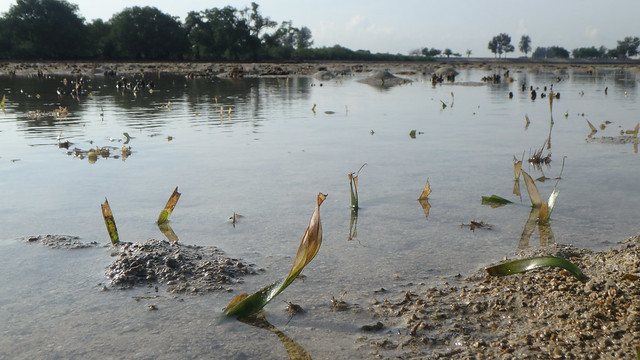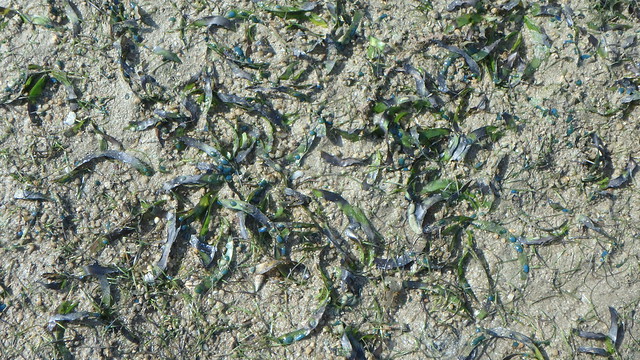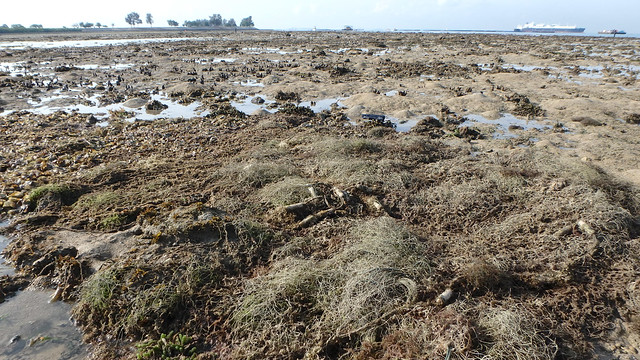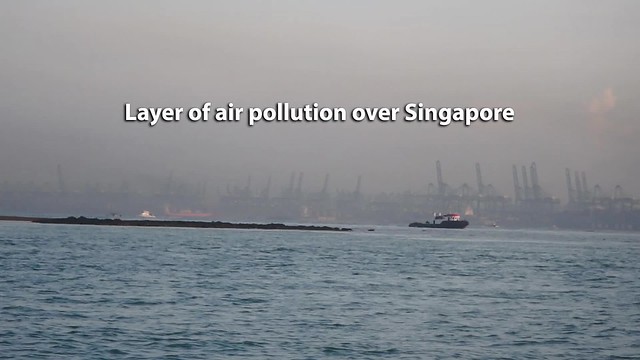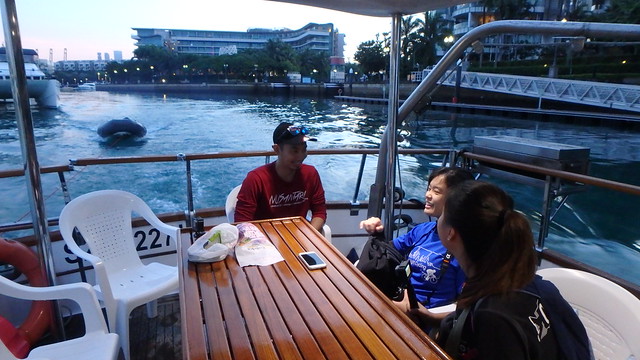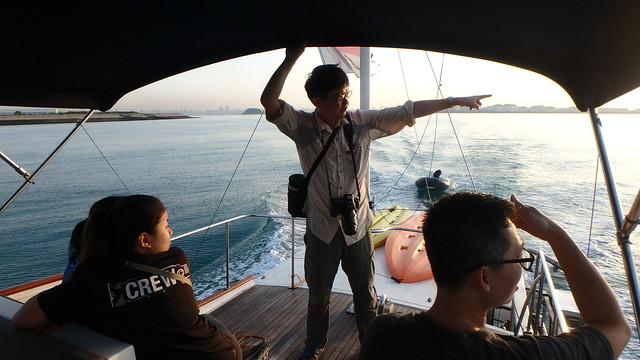As we were leaving, we glimpsed dolphins briefly. One was a small Indo-pacific hump-backed dolphin, possibly a juvenile. No photos, but what a great encounter! Unfortunately, I also came across a large abandoned net.
Pulau Semakau is NOT the same as the Semakau Landfill. The Landfill was created by destroying all of Pulau Saking, and about half of the original Pulau Semakau by building a very long seawall. Fortunately, the landfill was constructed and is managed in such a way that the original mangroves, seagrass meadows and reefs on Pulau Semakau were allowed to remain.
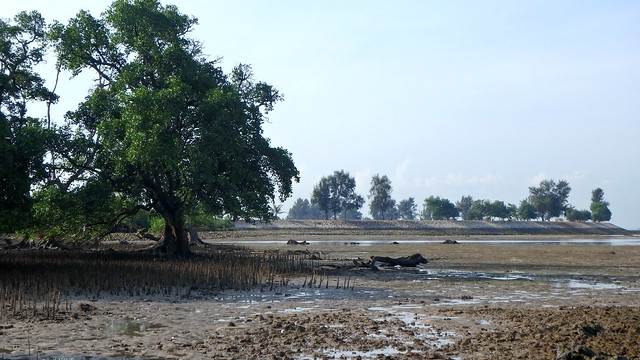 |
| Original mangrove trees with Landfill seawall on horizon. |
As the existing half of the Landfill was used up, the Phase 2 of the Landfill was launched. This involved closing the gap of the seawall on the Semakau Landfill, forming one big pool where incinerated ash will be dumped. NEA worked to limit the damage to natural shores during the construction work for this expansion of the landfill.
The reefs here are not as rich as on other parts of Pulau Semakau. But there were still some hard corals.
There were some nice Acropora corals and branching Montipora corals, most seemed alright although one was rather pink. There were also many Cauliflower corals and Sandpaper corals that were healthy. These two kinds of corals were usually the first to bleach.
There were many large Pore boulder corals, some were pale. Small Merulinid corals were also common. And I saw one small Moon coral.
There were a few Disk corals of various kinds. Most seemed alright. There were also many Anemone corals and Small goniopora corals.
Among the corals was this small Noble volute. The rest of the team also spotted a Fluted giant clam! It might be the same one we last saw in Jul 2015.
Among the interesting animals I saw in the sandy areas was this trail made by a moon snail which ended at a sand collar that appears to have just been laid.
There were also some small Weasel olive snails.
There were also lots of Giant carpet anemones, although none of them had clownfishes or anemone shrimps in them. As well as many small Haddon's carpet anemones, also lacking anemone shrimps. I saw one Very long sea anemone, several Frilly sea anemones and one Swimming anemone. The rest of the team saw a few Fire anemones.
The seagrasses were studded with many small Garlic bread sea cucumbers. As well as small Common sea stars. There were big sea stars too, many in 'mating' position. I saw one Durian sea cucumber and a few small sand dollars. It seems the shore is a little livelier than during our last survey in Jan 2017.
There are also seagrasses near the Landfill seawall. Here's a video clip of them.
While most of the other kinds of seagrasses seemed alright, the Tape seagrasses were still cropped short. There were some long Tape seagrass but the leaf blades were tightly coiled. Similar to what I saw on our survey in Jan 2017.
There were also some patches of burned seagrasses
Alas, I came across a large abandoned net in a pile. It seems to have been abandoned for a long time. I only saw one Red egg crab trapped in the net and released it alive. We saw a very long net here too in Jan 2017.
On the way to the survey, on a beautiful blue sky sunrise, it was hard not to notice the layer of pollution over Southern Singapore and the trail of emissions from the petrochemical plants on Pulau Bukom across the sky.
We were joined today by youths who are filming our seagrasses and shores!
Thanks to Marcus and the other experienced team members for sharing with the newbies.
Looking forward to new perspectives of our shores from these intrepid youths!
MORE photos from those who joined our trip:
Chris Wong
Jianlin Liu
Loh Kok Sheng
Meanwhile, Abel Yeo surveyed Sentosa on the same day

